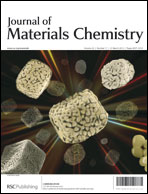Inverted organic light-emitting diodes (IOLEDs) with a bottom cathode are of great interest for large-size active-matrix displays due to their easy integration with n-type thin film transistors (TFTs) based on low-cost and highly-uniform amorphous silicon and oxide. In this work, a solution-processable electron transporting material 2,7-bis(diphenylphosphoryl)-9,9′-spirobi[fluorene] (SPPO13) is employed to blend with a solution-processable hole transporting material 4,4′,4′′-tri(9-carbazoyl)triphenylamine (TCTA) to be used as a universal bipolar co-host for blue, green and red phosphors, and for the first time, phosphorescent IOLEDs are fabricated by solution-processing small molecules. High efficiency and reduced efficiency roll-off are achieved in the solution-processed IOLEDs, which mainly contribute to the high quality of the solution-processed small molecule films as well as the balanced charge injection in the co-host system. Importantly, the solution process is advantageous over vacuum evaporation to deposit multi-component small molecule films, and can be expected to reduce manufacturing costs. Our results demonstrate a promising approach to fabricate low-cost and high-performance IOLEDs for n-type TFT-based displays.

You have access to this article
 Please wait while we load your content...
Something went wrong. Try again?
Please wait while we load your content...
Something went wrong. Try again?


 Please wait while we load your content...
Please wait while we load your content...